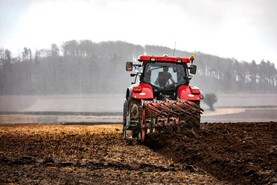The period when slurry spreading is not allowed on Irish farms will start soon. From 15 October, farmers are not allowed to spread slurry on their lands under the rules of the Nitrates Directive. In the final weeks of the season, it is important that farmers keep their concentration when it comes to safety issues.
Ventilation
Gases released during slurry agitation include ammonia, carbon dioxide, methane and hydrogen sulphide, which is by far the most deadly, as one breath can potentially kill. As the gas levels increase, they affect your senses. You may think it is not present as you cannot smell it, but it is actually present in very high concentrations. The harsh reality is that exposure to concentrations above 500ppm causes confusion, disorientation, rapid collapse and can kill in seconds. The gas release is greatest in the first 15 to 30 minutes of mixing.
The single most important safety protocol when agitating slurry is to remove yourself, all personnel and livestock from buildings above or adjacent to the slatted tank before you start and stay out of any buildings for, at least, the first 30 minutes to one hour of agitation. Know where your children are and exclude them from the farmyard during such operations and always inform someone of what you are doing. If possible, have two people present.
All available ventilation should be opened to provide a draught, especially at floor level, and always try agitating and spreading slurry on a windy day where there is good air movement. Outdoor agitation points are preferable but, when in confined spaces, try to avoid very vigorous agitation. Never enter a tank without either suitable breathing apparatus (check manufacturer’s instructions) and/or a harness attached to a lifeline controlled by at least two other adults standing outside.
Also, when agitating, avoid naked lights or smoking, as the gas mixture can be highly inflammable.
Signage and lighting
Warning signage is crucial to securing the farmyard and should be highly visible whether slurry tanks are covered or uncovered. Any dangers should be clearly pointed out to visitors and particularly children. Surfaces around agitation points should be free of obstacles which can act as trip hazards and surfaces should be kept clean while working to prevent slips or falls. Adequate lighting should be installed in the farmyard area, with agitation points clearly marked, ideally with reflective tape to highlight the area.
Barriers
When slats or manhole covers are lifted or removed for agitation or when emptying tanks, make sure there is adequate temporary protection of such openings. Where possible, safety access manhole covers should be fitted.
In the case of slurry lagoons or open tanks, a childproof safety wall or security fence of at least 1.8m in height with locked access gates should be fitted. Safeguard any holes that have developed and be aware of dangers surrounding the lagoon, to ensure there is adequate protection. A guard rail may be necessary.
Maintenance
The importance of having the machinery involved in good working order cannot be emphasised enough. It is crucial that there are safety covers on the PTO shafts and tankers are fitted with braking systems. During land application, driving speeds should be appropriate to the terrain you are working on and due diligence should be shown to low-lying electrical cables where relevant.
If managed appropriately, slurry is a valuable asset on any farm, rich in nutrients and organic material. It is important to take the time to analyse the farmyard, the types of slurry storage facilities and the precautions that are in place to prevent accidents.
If not managed appropriately, slurry-related facilities and operations can lead to an accident which can destroy a family and community. As the slurry spreading season draws to a close, take the time to examine your own operation. Look at the dangers through the eyes of a farm visitor or a child. The slurry facilities on the farm should be safe for everyone present.






 This is a subscriber-only article
This is a subscriber-only article











SHARING OPTIONS: